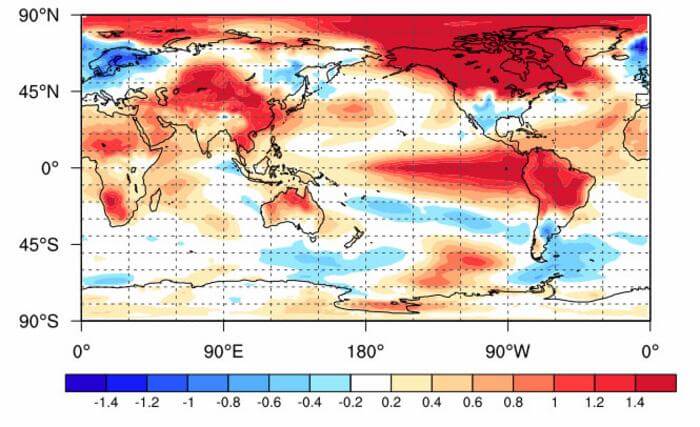The scorching heatwaves of 2023’s summer and autumn shook the world, raising a pertinent question: Will this lead into the warmest winter the globe has ever witnessed?
After a summer and autumn marked by extreme temperatures and a consistent global warming trend across oceans and landmasses, concerns mounted about what might follow. The global average temperature during June to October 2023 surpassed the 1991-2020 average by 0.57℃. August and September soared even higher, surpassing historical averages by 0.62℃ and 0.69℃, respectively, eclipsing the records set in 2016.
From hottest days to hottest seasons, 2023 has continuously grabbed headlines for its unprecedented heat. Amidst global warming, the reemergence of the El Niño phenomenon after seven years added fuel to the heat. This streak of breaking historical temperature records has sparked widespread interest in the upcoming winter trends for 2023/24.
In response to these concerns, the Short-Term Climate Prediction Team at the Institute of Atmospheric Physics, Chinese Academy of Sciences, conducted extensive research. Utilizing multiple self-developed climate prediction systems, the team examined the anomalies in the global climate for the 2023/24 winter. Their latest findings, published in the journal Advances in Atmospheric Sciences, predict the imminent maturity of a moderate to strong (ENSO index > 1.5oC) Eastern Pacific El Niño during the upcoming northern hemisphere winter. This event is poised to trigger anomalous anticyclone activity in the Northwest Pacific, initiating a Pacific-North American atmospheric teleconnection wave pattern, thereby influencing the winter climates of East Asia and North America.
But how warm will this winter truly be? The report emphasizes the combined effects of the El Niño event and the long-term global warming trend. Regions in the mid-low latitudes of Eurasia and most parts of the Americas are likely to experience an exceptionally warm winter. There’s a 95% chance that the global average surface temperature for the 2023/24 winter will set a new historical record. Specifically, surface temperatures in China might exceed double the usual temperatures, potentially setting the highest winter temperature record since 1991.
Predicting the climate system not only involves understanding internal variability but also considering external forcings. For instance, the consecutive La Niña occurrences from 2020 to 2022 delayed global warming, highlighting the importance of external forcings. Recent research from the United States also indicates the significance of external forcings, particularly the 2019 Australian wildfires, in triggering multi-year La Niñas. The mechanism involves wildfire aerosols creating low clouds over the Southern Ocean, reducing sea surface temperatures, shifting the Intertropical tropical convergence zone northward, favoring the occurrence of multi-year La Niñas.
While the credibility of these external forcings remains uncertain due to limited instances, studies of past climatic volcanic eruptions offer more insights. Research from the Sun Yat-sen University Volcanic Research Team (Zhou & Liu, 2023) indicates that over the past millennium, eruptions of 26 Southern Hemisphere volcanoes were frequently followed by three years of La Niña occurrences, confirming the hypothesis that cooling in the Southern Ocean can trigger multi-year La Niñas. The Australian wildfires cool the Southern Ocean through low cloud formation in the troposphere, while Southern Hemisphere volcanoes cool the ocean by reflecting sunlight with aerosols in the stratosphere.


